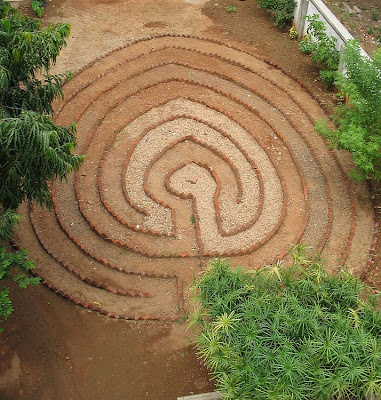Quo Vadis, the Interfaith Dialogue Centre in Tiruvannamalai recently constructed a labyrinth in the back of their compound, to which all are welcome. In the upcoming Arunachala Grace Newsletter there will be a narrative on the nature of labyrinths as a walking meditation. So if you are not a subscriber of the free Newsletter, check out the Newsletter facility at the left column of this page.
Labyrinths have been around for over four thousand years and have been integral parts of many cultures and religious traditions around the world. The Hopi called the labyrinth the symbol for "Mother Earth" and equated it with the Kiva (“Sacred Lodge”). Like Stonehenge and the pyramids, labyrinths are magical geometric forms that define sacred space. A labyrinth pattern, usually circular, has been associated with pilgrimages, rituals and self-discovery and represents the life journey.
The difference between a labyrinth and a maze is that a labyrinth has only one path leading to the centre and back out again and in which there are no dead ends.
To find out more about Quo Vadis Interfaith Dialogue Centre, visit their website at this link here.
The difference between a labyrinth and a maze is that a labyrinth has only one path leading to the centre and back out again and in which there are no dead ends.
To find out more about Quo Vadis Interfaith Dialogue Centre, visit their website at this link here.

No comments:
Post a Comment